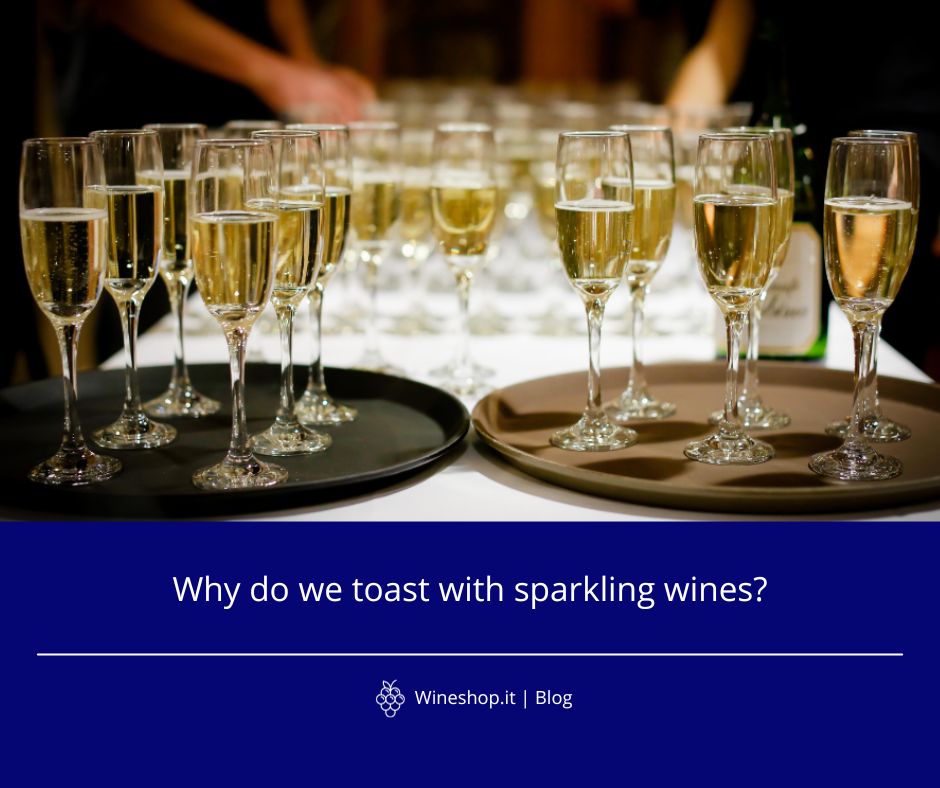Why do we toast with sparkling wines?
In these days, as usual, we have received many orders of sparkling wines: the wines for the party and for the toast.
While we were preparing this huge amount of packages, we asked ourselves a question: why do we celebrate and toast with sparkling wines? Or: why are sparkling wines the toast wines? Why them and not the classic red or white wines?
We decided to answer these questions in our article.
We'll reveal why sparkling wines are the favorite wines for parties and toasts.
Why are sparkling wines the wines for celebrations and toasts?
It is difficult to establish a date when sparkling wines became the wines for toasts and celebrations. There are those who argue that this period could correspond to the 18th century, after, in the previous century, Dom Pérignon "invented" Champagne with refermentation of a base wine.
However, the attempt to reconstruct why this type of wine has established itself for toasting is less complicated and intricate. There are a series of hypotheses which, taken together, provide us with a rather exhaustive explanation.
Let's try to analyze them one by one.
Hypothesis 1: superstition
The quantity of carbon dioxide in a bottle of sparkling wine is such as to cause, in many cases, the classic "bang". When this effect of bottles of sparkling wine was discovered, a very particular belief spread: it was thought that the "bang" could scare away negative or evil spirits.
Immediately, this belief was associated with the toast, considered a good luck ritual, in which to wish good health and a prosperous, happy and fortunate future, free from negative presences. Obviously, the bang could only be guaranteed by sparkling wines, not by still red or white wines. Et voilà, here the sparkling wines were included in this ritual and became the wines of toasts and parties.
In any case, wine etiquette does not recommend the bang, as it is dangerous for the safety of those present (the cork that comes out reaches such speeds as to put the physical safety of those who may be hit by it at risk), inelegant and potentially harmful to the organoleptic properties of the wine. A slight noise is better. Will it be enough to scare away negative presences?
Hypothesis 2: marketing
For that typical finesse and elegance that characterizes the perlage and bubbles of a sparkling wine, for their marked effervescence, for their golden color, for the particular production method, sparkling wines have been interpreted as wines different from others, particular and suitable for special moments.
In short, their chromatic appearance and their organoleptic properties have led many producers to include them in this ritual, according to a marketing strategy that has proven to be successful.
Hypothesis 3: temporal position in the meal
The toast is a ritual that is carried out either at the beginning or at the end of a meal. Depending on their degree of sweetness, sparkling wines are ideal wines with an aperitif or for a pre-meal, in the drier versions, or with desserts, at the end of the meal, precisely in their sweet versions.
The link between toasts and bubbles is also justified by this common aspect, the same temporal location before and after the central courses of a meal (for etiquette you should never toast during a meal). Of course, brut sparkling wines can be served during a meal, but with an aperitif they are sublime. Sweet sparkling wines, on the other hand, are to be drunk only with cakes and desserts, so everything seems to be made specifically for toasting and celebrating with sparkling wines and bubbles.
If you liked our article and if you want to continue to receive news, updates and curiosities about the world of wine, subscribe to the Wineshop.it wine newsletter. Lots of content and offers await you!









